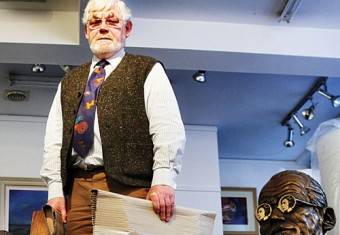Search Results for 'Old Malt pub'
4 results found.
When Michael D was vice president

For some reason the game of soccer seemed to be popular with Claddagh people. In the 1930s there were at least three teams representing the area. Claddagh Rangers were playing senior soccer, the equivalent of League of Ireland today, Old Claddonians were fielding teams, and by 1937, Galway Rovers were developing a youth team as well as a junior side. In their early days Rovers had no clubhouse, though the Old Malt pub could be described as a hangout, as could the Atlanta Hotel, whose owner Josie Owens had strong connections with the club.
Galway Rovers soccer teams

I am not sure when the game of soccer was first played competitively in Galway or who were the first teams. It seems to have been a popular sport in the Claddagh. In the early 1930s a team called Claddagh Rangers were playing senior soccer which is the equivalent of League of Ireland today. Another team from the area around that time was Old Claddonians, but the club we are concerned with today is Galway Rovers. In their early days, they had no clubhouse, though the Old Malt pub and the Atlanta Hotel could be described as hangouts. One of their earliest teams, as we see in photograph 1, won the Celtic Shield in 1933.
Galway Rovers soccer teams

I am not sure when the game of soccer was first played competitively in Galway or who were the first teams. It seems to have been a popular sport in the Claddagh. In the early 1930s a team called Claddagh Rangers were playing senior soccer which is the equivalent of League of Ireland today. Another team from the area around that time was Old Claddonians, but the club we are concerned with today is Galway Rovers. In their early days, they had no clubhouse, though the Old Malt pub and the Atlanta Hotel could be described as hangouts. One of their earliest teams won the Celtic Shield in 1933.
Sad day as last of the Kenny’s leaves the city centre

For 25 years, the Kenny Bookshop and Gallery in High Street/Middle Street was not just the city’s leading bookshop and gallery, it was an iconic structure. It was a place of good business and good shopping, a meeting point for writers and artists, and a venue that brought the arts directly to Galwegians.

